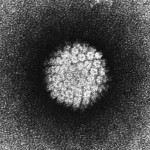What I now know about warts
Warts. We’ve all heard of them; we’ve all seen them; but how many of us know what they’re all about? I realized I didn’t have a clue until I found myself the not-so-proud owner of one.
In December 2011 I discovered one on my thumb. I finally shook it exactly 2 years later in December 2013, and I’d like to tell you what I learnt during that time.
Warts are caused by the HPV virus. In fact, the P in HPV stands for papilloma, the medical name for warts. You may have heard of HPV as a sexually transmitted infection that’s linked to cervical cancer and throat cancer. Seems pretty terrifying? But here’s something that wasn’t clear from the outset: there’s not just one kind of HPV virus. Different kinds of HPV infect different parts of the body, and the kind that causes skin warts cannot become the sexually transmitted kind that is linked with cancer. Good to know. They really should give them different names!
The virus infects a very small area of the skin, and builds a whole ecosystem inside a dome. Under a microscope it looks like a cauliflower, and if you take the top off it looks like a ring of red dots, which are blood vessels the virus confuses your body into building for it. Woah. The virus stays completely localized to this little dome and doesn’t normally bother infecting any more of your body, especially if you don’t antagonize it. Really fucking weird and quite contrary to the way I had perceived viruses as working.
Viruses survive by spreading themselves from host to host, and we know that warts do this, but the mechanism by which they spread is actually a bit of a mystery. It’s pretty clear that if you pick warts off or sand them off they often end up infecting areas of broken skin nearby, but how they spread to other people is less clear. There’s lots of advice for how maybe to help prevent transmission, but the truth is we really don’t know.
And the same goes for treatment. Because warts are not life-threatening, there is very little work put into finding any kind of treatment for them. This will probably remain the case for all time, because we really need to be putting research funding into finding cures for things that kill people. And of course there’s the small matter of us having never found a cure (other than our natural immune systems) for any virus ever.
Every doctor I visited during my infection suggested a different kind of treatment. I had several sessions of cryotherapy (liquid nitrogen applied by a kind of cotton-bud gun) and six months of painting my wart with ugly white salicylic acid (aspirin) paint every day. One doctor even suggested a course of duct tape treatment. I am not joking.
Speaking of salicylic acid: if you ever have this treatment, learn from my mistakes. Whatever the label tells you to do, make sure the paint extends to a ring of healthy skin surrounding the wart. When you’re sanding the dome down in the mornings it breaks the skin and if there’s no paint on that broken skin the infection can get in. I started with one wart and for a long while after starting treatment I had a cluster of three warts instead. Also: pumice stones are shit for sanding warts during treatment. You want a bag full of emery boards so you can avoid sanding away healthy skin.
Or, you could just wait for the wart to vanish. By all accounts we don’t really know if any of the treatments are much more effective than placebos. One day I sanded my wart and it just came off (there’s still a scar, but the infection is definitely gone), but there’s no way to know if that was in part due to the salicylic acid or if it was just my immune system doing the work by itself.
Warts are a bit ugly but they’re localized, non-life-threatening, and in 12-36 months your body removes them all by itself. Maybe best just leave them be?
Here’s a quick summary for all you tl;dr types:
- The HPV that causes warts and the HPV that causes cancer are different viruses.
- Localized viruses are really weird.
- We don’t know how they spread.
- We don’t know how to treat them, and we probably never will.
- Treatment can make them worse.
- They just go away by themselves and they never killed anyone.



 Leeds-based non-binary nerd and sewist. I won't break my streak on Duolingo for anyone.
Leeds-based non-binary nerd and sewist. I won't break my streak on Duolingo for anyone.  Delicious
Delicious Leeds Beer Quest
Leeds Beer Quest Twitter
Twitter